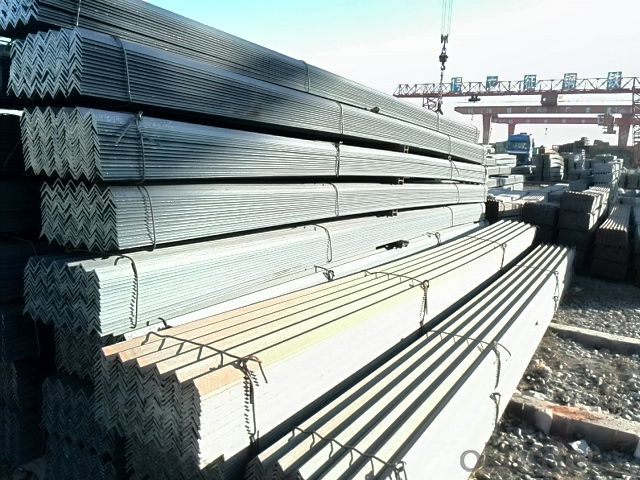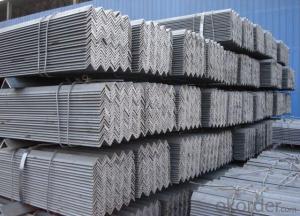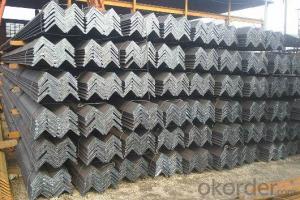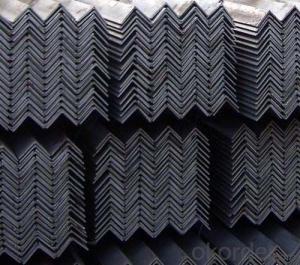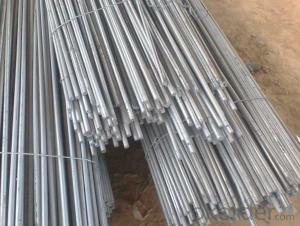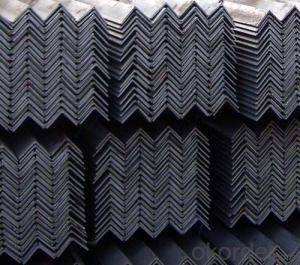Hot Rolled Steel Angle Bars with Size 20x20-200x200
- Loading Port:
- Tianjin
- Payment Terms:
- TT OR LC
- Min Order Qty:
- 25 m.t
- Supply Capability:
- 10000 m.t/month
OKorder Service Pledge
OKorder Financial Service
You Might Also Like
OKorder is offering Hot Rolled Equal Angles at great prices with worldwide shipping. Our supplier is a world-class manufacturer of steel, with our products utilized the world over. OKorder annually supplies products to European, North American and Asian markets. We provide quotations within 24 hours of receiving an inquiry and guarantee competitive prices.
Product Applications:
Hot Rolled Equal Angles are ideal for structural applications and are widely used in the construction of buildings and bridges, and the manufacturing, petrochemical, and transportation industries.
Product Advantages:
OKorder's Hot Rolled Equal Angles are durable, strong, and resist corrosion.
Main Product Features:
· Premium quality
· Prompt delivery & seaworthy packing (30 days after receiving deposit)
· Corrosion resistance
· Can be recycled and reused
· Mill test certification
· Professional Service
· Competitive pricing
Product Specifications:
Manufacture: Hot rolled
Grade: Q195 – 235
Certificates: ISO, SGS, BV, CIQ
Length: 6m – 12m, as per customer request
Packaging: Export packing, nude packing, bundled
Sizes: 25mm-250mm | ||
a*t | ||
25*2.5-4.0 | 70*6.0-9.0 | 130*9.0-15 |
30*2.5-6.6 | 75*6.0-9.0 | 140*10-14 |
36*3.0-5.0 | 80*5.0-10 | 150*10-20 |
38*2.3-6.0 | 90*7.0-10 | 160*10-16 |
40*3.0-5.0 | 100*6.0-12 | 175*12-15 |
45*4.0-6.0 | 110*8.0-10 | 180*12-18 |
50*4.0-6.0 | 120*6.0-15 | 200*14-25 |
60*4.0-8.0 | 125*8.0-14 | 250*25 |
FAQ:
Q1: Why buy Materials & Equipment from OKorder.com?
A1: All products offered byOKorder.com are carefully selected from China's most reliable manufacturing enterprises. Through its ISO certifications, OKorder.com adheres to the highest standards and a commitment to supply chain safety and customer satisfaction.
Q2: What is the normal tolerance of your steel products ?
A2: Normally 7%-9%, but we can also produce the goods according to the customers' requests.
Q3: Can stainless steel rust?
A3: Stainless does not "rust" as you think of regular steel rusting with a red oxide on the surface that flakes off. If you see red rust it is probably due to some iron particles that have contaminated the surface of the stainless steel and it is these iron particles that are rusting. Look at the source of the rusting and see if you can remove it from the surface.
Images:
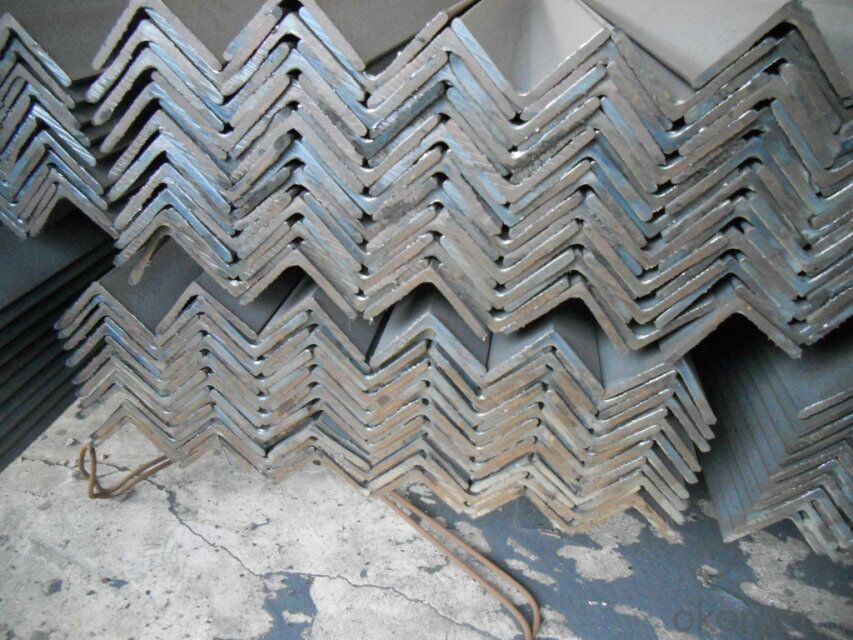
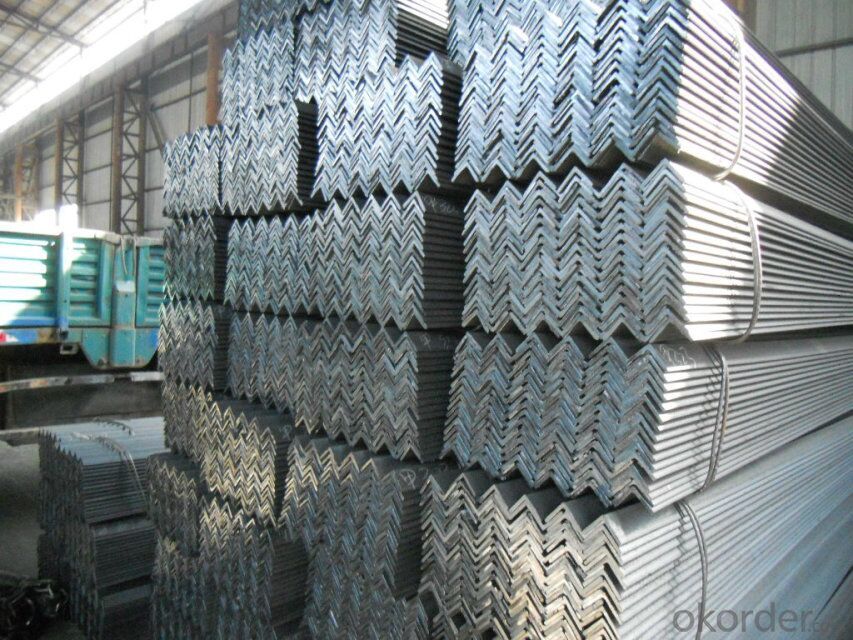
- Q: Can steel angles be used as supports for beams or columns?
- Yes, steel angles can be used as supports for beams or columns. Steel angles provide structural support and are commonly used in construction to provide stability and reinforcement for beams and columns. They are known for their strength and durability, making them suitable for bearing heavy loads and providing structural integrity to the overall structure.
- Q: Can steel angles be used for support columns in building construction?
- Yes, steel angles can be used for support columns in building construction. Steel angles provide structural support and stability due to their high strength and rigidity. They are commonly used in construction projects for various purposes, including supporting beams and columns.
- Q: How do you reinforce a steel angle?
- Depending on the specific application and requirements, there are various ways to reinforce a steel angle. Here are a few commonly used techniques: 1. Welded Plates: To enhance the strength of a steel angle, welded plates can be added at critical points. These additional plates are typically made of the same or stronger steel and are welded to the flanges or web of the angle. This method improves the overall rigidity and load-bearing capacity of the angle. 2. Gusset Plates: An alternative effective method for reinforcing a steel angle involves using gusset plates. These plates usually have a triangular shape and are welded to the flanges or web of the angle. By distributing forces more evenly across the angle, gusset plates increase its strength and resistance to bending or twisting. 3. Bracing: Bracing is a technique that involves adding extra steel members to reinforce a steel angle. These members can be directly connected to the angle or attached using welded or bolted connections. Bracing effectively enhances the angle's resistance to lateral or torsional forces and improves its overall stability. 4. Composite Materials: In certain cases, composite materials can be utilized to reinforce a steel angle. Fiber-reinforced polymers (FRPs) or carbon fiber reinforced polymers (CFRPs) can be wrapped around or bonded to the angle, providing added strength and stiffness. These composite materials significantly enhance the angle's load-carrying capacity and resistance to corrosion. To determine the most suitable method for reinforcing a steel angle in a specific application, it is essential to consult a structural engineer or a professional with expertise in steel structures. The chosen reinforcement technique must take into account the expected loads, the angle's geometry, and the desired level of reinforcement.
- Q: Can steel angles be used for stairs or handrails?
- Yes, steel angles can be used for stairs or handrails. Steel angles are commonly used in construction as they provide structural support and stability. When used for stairs, steel angles can be incorporated as stringers or supports, ensuring the stability and strength of the staircase. Similarly, for handrails, steel angles can be used as the main frame or support structure, providing a sturdy and safe handrail for users. The use of steel angles in stairs and handrails offers durability, resistance to wear and tear, and the ability to withstand heavy loads, making them a popular choice in construction projects.
- Q: Can steel angles be used in the construction of sports stadiums?
- Sports stadiums can indeed utilize steel angles in their construction. These versatile structural components are capable of bearing heavy loads and providing stability in expansive structures like sports stadiums. They are commonly employed in the construction industry for a variety of purposes, including framing, support columns, and bracing systems. Steel angles possess remarkable strength and durability, rendering them suitable for enduring the dynamic forces and substantial loads encountered within sports stadiums. Furthermore, steel angles can be easily fabricated and tailored to meet the precise design and structural prerequisites of the stadium, thereby offering construction flexibility. All in all, steel angles emerge as an ideal selection for sports stadium construction due to their robustness, versatility, and ability to withstand the distinctive demands of such large-scale edifices.
- Q: Can steel angles be used in automotive chassis construction?
- Yes, steel angles can be used in automotive chassis construction. Steel angles are commonly used in the construction of automotive chassis due to their structural strength, durability, and cost-effectiveness. They provide excellent support and stability, making them suitable for various chassis components such as frame rails, cross members, and suspension mounting points. Additionally, steel angles can be easily welded or bolted together, allowing for efficient assembly and customization of automotive chassis structures.
- Q: Can steel angles be used in outdoor or exposed applications?
- Steel angles can indeed be utilized in outdoor or exposed settings. Typically, they are crafted from galvanized steel, which is covered with a protective zinc layer. This zinc coating aids in averting corrosion and rust, rendering them fitting for outdoor purposes. Moreover, steel angles possess robustness and sturdiness, making them appropriate for a range of applications including construction, infrastructure, and outdoor furnishings. Nonetheless, it is crucial to carry out regular maintenance and inspections to detect any indications of corrosion or harm, taking appropriate measures to forestall possible problems.
- Q: Do steel angles require any special maintenance?
- Steel angles do not require any special maintenance, but proper care and attention can help prolong their lifespan. Regular cleaning to remove dirt, debris, and corrosive substances is recommended. It is also important to inspect the angles for any signs of rust, cracks, or damage, and address them promptly to prevent further deterioration. Applying a protective coating or paint can help prevent corrosion and extend the life of the steel angles. Overall, while steel angles are generally low-maintenance, regular inspections and maintenance practices can help ensure their optimal performance and longevity.
- Q: How do steel angles contribute to the overall earthquake resistance of a structure?
- Steel angles contribute to the overall earthquake resistance of a structure by providing stability and strength. These structural components are often used to reinforce corners and connections, distributing and transferring the seismic forces throughout the building. Their rigid and load-bearing properties help to resist bending, twisting, and shearing, enhancing the structural integrity and reducing the risk of collapse during an earthquake.
- Q: What are the common methods of surface cleaning for steel angles?
- Steel angles can be cleaned using various methods to remove dirt, rust, paint, and other contaminants, ensuring a smooth and clean surface. Mechanical cleaning is a widely used method that involves scrubbing the surface with abrasive materials like sandpaper, wire brushes, or abrasive pads. This is effective for spot cleaning or smaller areas. Chemical cleaning, on the other hand, utilizes chemicals or solvents to dissolve or loosen contaminants. A cleaning solution is applied directly to the steel angles and then scrubbed with a brush or cloth. This method is useful for larger areas or stubborn stains and paints. Power washing, also known as pressure washing, is another popular method for cleaning steel angles. It involves using a high-pressure water jet to remove dirt, dust, and loose particles. Power washing is efficient for large areas or for eliminating loose rust or paint. Abrasive blasting is a highly effective method that utilizes compressed air to propel abrasive materials like sand or steel grit onto the surface of the steel angles. This method is particularly useful for removing heavy rust, paint, or scale, leaving a clean and smooth finish. It is important to consider the condition of the steel angles and the desired level of cleanliness when choosing a cleaning method. Some methods may be more suitable for specific applications and may require specialized equipment. Furthermore, it is crucial to follow proper safety precautions, including wearing protective gear and ensuring adequate ventilation, when using any cleaning method.
Send your message to us
Hot Rolled Steel Angle Bars with Size 20x20-200x200
- Loading Port:
- Tianjin
- Payment Terms:
- TT OR LC
- Min Order Qty:
- 25 m.t
- Supply Capability:
- 10000 m.t/month
OKorder Service Pledge
OKorder Financial Service
Similar products
Hot products
Hot Searches
Related keywords



